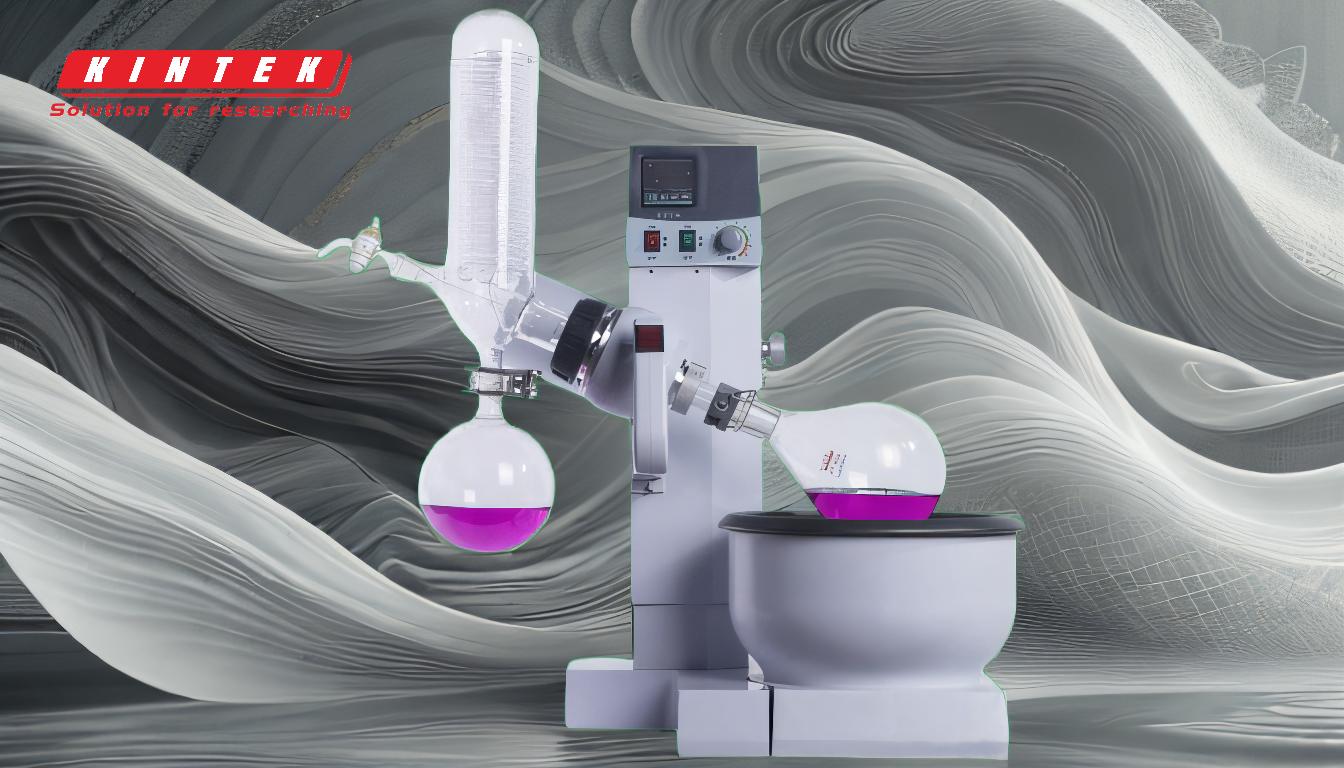A rotary evaporator, or rotovap, is a laboratory instrument designed to efficiently remove solvents from a solution through evaporation. It is particularly effective for isolating desired compounds after processes like chromatography or extraction, and it excels at removing low-boiling solvents. The device operates by rotating a flask under reduced pressure, which increases the evaporation surface area and lowers the boiling point of the solvent. This allows for gentle and controlled evaporation, preserving the integrity of the solute. Rotary evaporators are widely used in fields such as chemistry, pharmaceuticals, and food production for processes like concentration, drying, and solvent recovery.
Key Points Explained:

-
Primary Function: Solvent Removal
- The main purpose of a rotary evaporator is to remove solvents from a solution. This is achieved through controlled evaporation, which is particularly useful for isolating desired compounds after processes like column chromatography or separatory-funnel extractions.
- It is especially effective for removing low-boiling solvents, which evaporate more readily under reduced pressure.
-
Working Principle: Reduced Pressure and Rotation
- The rotary evaporator operates by rotating an evaporation flask under reduced pressure. This rotation creates a thin film of the solution on the inner wall of the flask, increasing the surface area for evaporation.
- The reduced pressure lowers the boiling point of the solvent, allowing it to evaporate at lower temperatures. This is crucial for preserving the chemical structure of heat-sensitive compounds.
-
Key Components and Their Roles
- Evaporation Flask: Holds the sample and rotates to create a thin film for efficient evaporation.
- Vacuum System: Reduces the internal pressure, lowering the boiling point of the solvent.
- Heated Bath: Provides controlled heat to the flask, aiding in the evaporation process.
- Condenser: Cools the evaporated solvent, converting it back into a liquid for collection in a receiving flask.
- Motorized Rotation System: Ensures consistent rotation of the flask, optimizing evaporation efficiency.
-
Applications in Various Fields
- Chemical Laboratories: Used for concentrating samples by evaporating solvents under controlled conditions.
- Pharmaceutical Industry: Essential for isolating and purifying compounds during drug development.
- Food Industry: Applied in processes like flavor extraction and concentration.
- Biological Research: Utilized for drying and concentrating biological samples.
-
Advantages of Using a Rotary Evaporator
- Efficiency: The combination of reduced pressure and rotation speeds up the evaporation process.
- Gentle Evaporation: Low-temperature operation preserves the integrity of heat-sensitive compounds.
- Versatility: Suitable for a wide range of solvents and applications.
- Scalability: Can handle both small-scale experiments and larger pilot production runs.
-
Process Steps in Detail
-
Step 1: Sample Preparation
The solution containing the desired compound and solvent is placed in the evaporation flask. -
Step 2: Application of Vacuum
The vacuum system reduces the pressure inside the flask, lowering the boiling point of the solvent. -
Step 3: Rotation and Heating
The flask rotates, creating a thin film of the solution, while the heated bath provides controlled heat to aid evaporation. -
Step 4: Condensation and Collection
The evaporated solvent passes through the condenser, where it is cooled and collected in a receiving flask. -
Step 5: Recovery of Solute
The remaining solute in the evaporation flask is now concentrated and can be further processed or analyzed.
-
Step 1: Sample Preparation
-
Importance in Solvent Recovery
- Rotary evaporators are also used for solvent recovery, which is both cost-effective and environmentally friendly. By condensing and collecting the evaporated solvent, it can be reused in other processes, reducing waste and operational costs.
-
Safety Considerations
- Vacuum Pressure: Proper handling of the vacuum system is crucial to avoid implosion or excessive pressure.
- Temperature Control: Precise temperature regulation ensures that heat-sensitive compounds are not degraded.
- Chemical Compatibility: Ensuring that all components are compatible with the solvents used is essential to prevent chemical reactions or damage to the equipment.
In summary, the rotary evaporator is a versatile and essential tool in laboratories and industries for efficient and gentle solvent removal. Its ability to operate under reduced pressure and controlled conditions makes it invaluable for processes like concentration, drying, and solvent recovery, while preserving the integrity of the desired compounds.
Summary Table:
| Key Feature | Description |
|---|---|
| Primary Function | Efficiently removes solvents from solutions through controlled evaporation. |
| Working Principle | Reduces pressure and rotates the flask to lower the solvent's boiling point. |
| Key Components | Evaporation flask, vacuum system, heated bath, condenser, motorized rotation. |
| Applications | Chemistry, pharmaceuticals, food production, and biological research. |
| Advantages | Efficient, gentle evaporation, versatile, and scalable. |
| Safety Considerations | Vacuum pressure, temperature control, and chemical compatibility are critical. |
Ready to enhance your lab's efficiency with a rotary evaporator? Contact us today to learn more!













